On average, it rains about 150 days per year in Ireland. Ireland's rainfall is a defining aspect of its climate, with an average annual precipitation of approximately 1,225 millimeters. The wettest months typically span from October to January, driven by Atlantic weather systems. There's a notable difference in rainfall between the eastern and western regions, with the western coast experiencing higher totals due to Atlantic influences, while the east benefits from a rain shadow effect.
Counties like Donegal and Mayo often record the highest rainfall, while areas like Dublin and Wexford receive less. Many mountainous districts rainfall follows a seasonal pattern, with autumn and winter being the wettest, potentially influenced by long-term climate change trends that may intensify precipitation.
Tourists should prepare for rain by packing waterproof gear and checking weather forecasts, but rainy days offer opportunities to explore indoor attractions like museums and pubs, where traditional music sessions provide a unique cultural experience. Overall, Ireland's rain is a vital part of its charm, offering both challenges and delights for visitors.
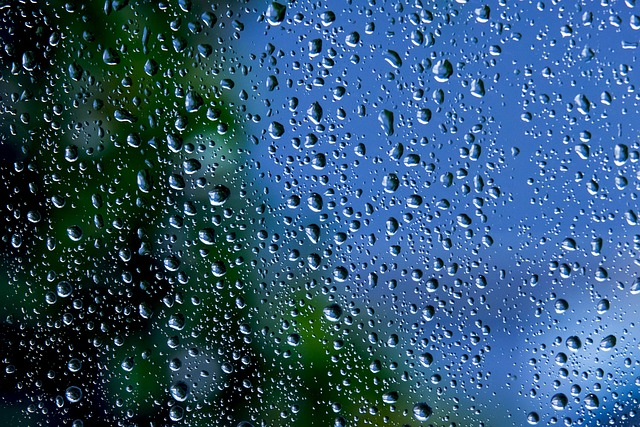
What is the Average Annual Rainfall in Ireland?
On average, Ireland receives around 1,225 millimeters (48 inches) of rainfall per year. When contemplating Ireland's rainfall, one of the first questions that come to mind is the average annual precipitation. However, this figure can vary significantly depending on the region and the year. The western and northwestern parts of the country tend to experience higher rainfall totals compared to the east and southeast. Average temperatures may reduce too making it good for tourists.
Regional Variations
The western and northwestern parts of Ireland tend to experience higher rainfall totals compared to the east and southeast coast. This disparity is largely attributed to the influence of Atlantic weather systems, which bring moisture-laden air and precipitation to the western coast. As a result, counties such as Donegal, Mayo, and Kerry often record some of the highest rainfall amounts in the country.
Conversely, the eastern and southeastern regions, including Dublin and Wicklow, generally receive less rainfall. This difference can be partly explained by the rain shadow effect caused by the mountains along the western seaboard, which creates drier conditions in the eastern areas.
Factors Influencing Rainfall
Several factors contribute to Ireland's diverse precipitation patterns. The country's geographical location on the western edge of Europe exposes it to prevailing westerly winds, which carry moisture from the Atlantic Ocean. Additionally, Ireland's topography, including mountain ranges and coastal features, plays a role in shaping local weather conditions and rainfall distribution.
Variability Over Time
While the average annual rainfall provides a broad perspective on Ireland's climate, it's essential to consider variability over time. Weather patterns can fluctuate from year to year, resulting in periods of above-average or below-average rainfall. Long-term climate change trends may also influence precipitation patterns, potentially leading to alterations in rainfall distribution and intensity in the future.
Visiting Dublin? Here are Best Things To Do In Dublin Ireland: In Depth Guide for 2024
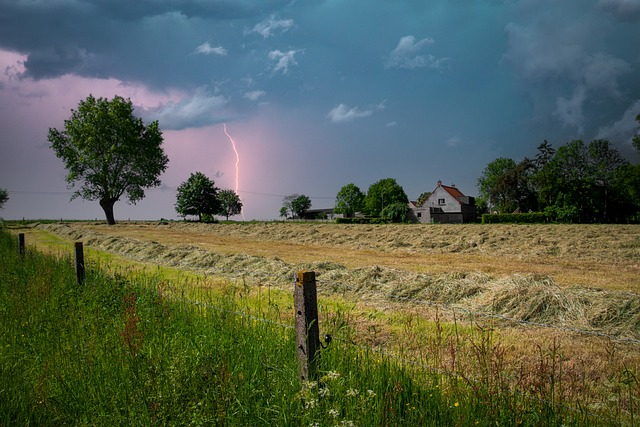
Which Months Experience the Most Rainfall in Ireland?
The autumn and winter months, particularly from October to January, see the highest levels of rainfall. In Ireland, rain is a year-round phenomenon, but certain months stand out for their propensity to bring wet weather. During this period, the Atlantic weather systems frequently sweep across the island, bringing moisture-laden air and precipitation. November is often cited as one of the wettest months, with frequent showers and stormy conditions.
Autumn Rainfall
As autumn sets in, Ireland experiences a transition from the drier months of summer to the wetter conditions of winter. October marks the beginning of increased rainfall, with frequent showers and occasional storms becoming more prevalent. The dampness of the season contributes to lush green landscapes characteristic of the Emerald Isle.
Winter Deluges
The winter months, particularly November and December, are typically the wettest of the year in Ireland. November, in particular, is often cited as one of the wettest months, with frequent showers and stormy conditions. The combination of low-pressure systems moving in from the Atlantic and colder temperatures can result in heavy rainfall, sometimes leading to localized flooding in susceptible areas.
January Showers
As the new year begins, January maintains the trend of elevated rainfall levels in Ireland. While the intensity of rainfall may vary from year to year, it's not uncommon to experience persistent showers and overcast skies during this time. However, despite the damp weather, Ireland's natural beauty continues to enchant visitors, with mist-shrouded landscapes adding a mystical allure to the scenery.
Going for golfing in Ireland? Know What is the Best Time to Golf in Ireland?
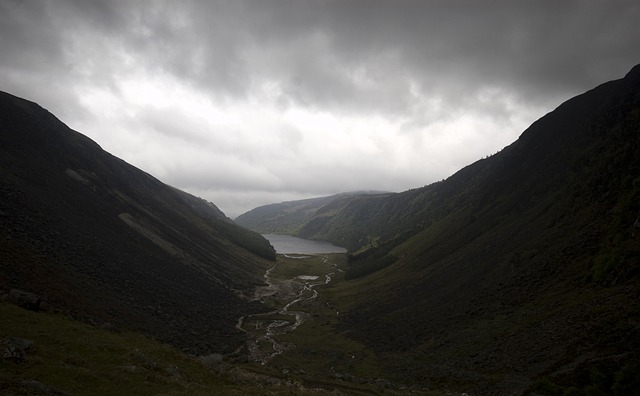
How Does Rainfall Differ Between Eastern and Western Ireland?
One notable aspect of Ireland's rainfall patterns is the difference between the eastern and western regions. The western coast, including counties such as Donegal, Mayo, and Kerry, tends to bear the brunt of the Atlantic weather systems, resulting in higher rainfall totals.
In contrast, the eastern and southeastern parts of the country, including Dublin and Wicklow, experience somewhat drier conditions due to the rain shadow effect caused by the mountains along the western seaboard.
Western Coast: Higher Rainfall Totals
The western coast of Ireland, encompassing counties such as Donegal, Mayo, and Kerry, experiences some of the best weather and the highest rainfall totals in the country. This region is particularly susceptible to the influence of Atlantic weather systems, which bring moisture-laden air and precipitation to the coastline. As a result, residents of western Ireland are accustomed to frequent rainfall and a generally wetter climate throughout the year.
Eastern and Southeastern Regions: Drier Conditions
In contrast to the west, the eastern and southeastern parts of Ireland, including Dublin and Wicklow, tend to experience somewhat drier conditions. This disparity can be attributed, in part, to the rain shadow effect created by the mountains along the western seaboard.
As prevailing westerly winds carry moisture-laden air from the Atlantic, the mountains act as a barrier, causing the air to rise and release moisture on the western side. Consequently, areas to the west generally averages to the east of these mountains receive less rainfall, resulting in comparatively drier conditions.
Visiting Limerick? Here are Best Things to do in Limerick Ireland

Impact on Agriculture and Environment
The variation in rainfall between eastern and western Ireland has significant implications for agriculture, water resource management, and the environment. While the west benefits from ample rainfall, supporting lush green landscapes and agricultural activities such as dairy farming, the east may face challenges related to water availability and irrigation during drier periods. Understanding these regional differences is essential for sustainable land use and resource allocation across the country.
What Areas in Ireland Receive the Least and Most Rain?
The areas in Ireland that receive the least rainfall are Dublin and Wexford along the eastern coast, while the wettest areas are Donegal and Mayo in the northwest. When it comes to pinpointing the driest and wettest areas in Ireland, geographical factors play a significant role. Counties along the eastern coast, such as Dublin and Wexford, tend to receive less rainfall compared to their counterparts on the western coast.
Conversely, the western counties, particularly those in the northwest, such as Donegal and Mayo, often record some of the highest rainfall totals in the country. Mountainous regions also tend to experience elevated levels of precipitation.

Least Rainfall: Dublin and Wexford
Counties along the eastern coast, notably Dublin and Wexford, receive the least amount of rainfall in Ireland. Positioned on the leeward side of the country, these areas are shielded from the full impact of Atlantic weather systems by the mountains along the western seaboard. As a result, they experience relatively drier conditions compared to average temperature and to their counterparts on the western coast.
Most Rainfall: Donegal and Mayo
In contrast, the western counties, particularly those in the northwest such as Donegal and Mayo, are among the wettest areas in Ireland. Exposed to the full force of Atlantic weather systems, these regions receive higher rainfall totals throughout the year. The combination of prevailing westerly winds and mountainous terrain contributes to the elevated levels of precipitation in these areas, making them lush and green but also prone to wet weather.
Influence of Topography
Mountainous regions across Ireland, irrespective of their location, tend to experience elevated levels of precipitation. This is due to orographic lift, where moist air is forced to rise over elevated terrain, leading to condensation and rainfall. As a result, areas with significant elevation, such as the Wicklow Mountains in the east and the Connemara Mountains in the west, receive above-average rainfall compared to surrounding low-lying areas.
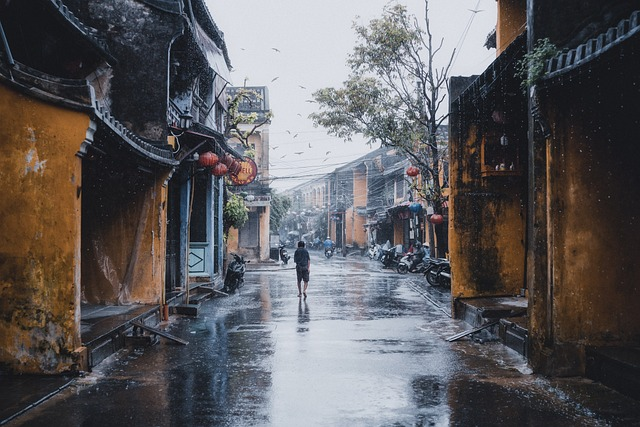
What are the Rainiest Seasons in Ireland?
The rainiest seasons in Ireland are autumn and winter, characterized by frequent Atlantic storms and frontal systems, while spring sees its fair share of showers, and summer tends to be drier overall with sporadic rain showers, particularly in the west.
Ireland's rainfall follows a seasonal pattern, with certain times of the year being notably wetter than others. As previously mentioned, autumn and winter are typically the rainiest seasons, characterized by frequent Atlantic storms and frontal systems.
Spring, generally warm summers can also bring its fair share of showers, albeit usually less intense compared to the winter months. Summer tends to be drier overall, but sporadic rain showers are not uncommon, particularly in the west.
Autumn and Winter
Autumn and winter are typically the rainiest seasons in Ireland. During this period, the southwest coast the country is frequently impacted by Atlantic storms and frontal systems, bringing heavy rainfall and blustery conditions. The combination of low-pressure systems and moist air from the Atlantic Ocean results in prolonged periods of wet weather, making these months the peak of the rainy season.
Spring Showers
Spring also sees its fair share of rainfall in Ireland, although usually less intense compared to autumn and winter. Showers are more sporadic and less prolonged during this season, but they can still contribute to overall precipitation levels. As temperatures gradually rise and the weather transitions from winter to summer, spring showers help sustain the lush green landscapes characteristic of the Emerald Isle.
Drier Summer Months
Summer tends to be drier overall in Ireland, with longer daylight hours and warmer average temperatures, leading to reduced rainfall. However, sporadic rain showers are not uncommon, particularly in the west of the country where Atlantic ocean weather systems can still influence the weather patterns. Despite the occasional rain, summer is generally the driest season, allowing for outdoor activities and leisure pursuits.

What are the Long-Term Trends in Ireland's Rainfall?
In recent years, there has been growing interest in understanding the long-term trends in Ireland's rainfall patterns, particularly in the context of climate change. While precise predictions can be challenging, some studies suggest that Ireland may experience more intense rainfall events in the future, leading to potential impacts on flooding and water resource management. Monitoring and adapting to these changes are crucial for ensuring resilience to extreme weather events.
Climate Change Impact
Climate change is expected to influence Ireland's rainfall patterns, with potential implications for flooding and water resource management. As global temperatures rise, the atmosphere can hold more moisture, leading to more intense rainfall events when precipitation occurs. This trend has the potential to exacerbate flooding in vulnerable areas and strain existing infrastructure for managing water resources.
Intensity of Rainfall Events
Studies suggest that Ireland may experience more frequent and intense rainfall events in the future. While the overall annual rainfall may not necessarily increase significantly, the distribution of rainfall throughout the year and the intensity of individual rainfall events could change. This could result in periods of drought followed by heavy rainfall, posing challenges for agriculture, water supply, and flood mitigation strategies.
Flood Risk
The increased intensity of rainfall events raises concerns about the risk of flooding in Ireland. Visit ireland, urban areas, in particular, but be aware that they are vulnerable to flash floods and inundation during heavy rainfall events. Climate adaptation measures, such as improved drainage systems, flood defenses, and land use planning, are essential for mitigating the impact of flooding and enhancing resilience to extreme weather events.
Water Resource Management
Effective water resource management is crucial for ensuring sustainable access to clean water for Ireland's population, agriculture, and industry. Climate change-induced shifts in rainfall patterns may affect water availability and quality, necessitating adaptive strategies such as water conservation measures, diversification of water sources, and investment in water infrastructure.
Adaptation and Resilience
Monitoring and adapting to changes in Ireland's rainfall patterns are essential for building resilience to climate change impacts. This includes implementing measures to manage flood risk, safeguard water resources, and promote sustainable land use practices. By proactively addressing the challenges posed by shifting rainfall patterns, Ireland can better prepare for a changing climate and ensure the well-being of its communities and ecosystems, preventing temperature extremes.

How Should Tourists Prepare for Rain When Visiting Ireland?
For tourists planning a trip to Ireland, preparing for rain is essential, given the unpredictable nature of the weather. Packing waterproof clothing, including a sturdy rain jacket and waterproof boots, is highly recommended. Additionally, carrying an umbrella or a compact rain poncho can provide extra protection against unexpected showers. It's also advisable to check the weather forecast regularly and plan indoor activities as alternatives in case of inclement weather.
Pack Waterproof Clothing
Packing waterproof clothing is essential for staying dry and comfortable during rainy or sunny days in Ireland. A sturdy rain jacket, waterproof boots, and waterproof trousers are must-have items to protect against moisture. These items will ensure that you can explore outdoor attractions without getting soaked.
Carry an Umbrella or Rain Poncho
In addition to waterproof clothing, carrying an umbrella or a compact rain poncho is advisable in the Irish weather. These portable rain accessories provide extra protection against unexpected showers and can be easily stowed in a backpack or purse when not in use. Having them on hand ensures that you're prepared for sudden changes in the weather, a different adaptation for tourists compared to summer season.
Check the Weather Forecast
Keeping an eye on the weather forecast is crucial when visiting Ireland. Weather conditions can change rapidly, so it's essential to stay informed about upcoming rainfall and plan your activities accordingly. Many weather apps and websites provide real-time updates, allowing you to adjust your plans based on the latest forecast. Months sunshine duration averages pretty low during rainfall season.
Plan Indoor Activities
While Ireland offers stunning outdoor scenery, it's wise to have indoor activities planned as alternatives for rainy days. Museums, galleries, historic sites, and cozy pubs are excellent options for sheltering from the rain while still enjoying the country's culture and heritage. Having a backup plan ensures that you can make the most of your time in Ireland, rain or shine.
Embrace the Rain
Lastly, embrace the rain and see it as part of the Irish experience. Rain is a common occurrence in Ireland and is integral to its lush green landscapes. Instead of letting it dampen your spirits, view rainy days as an opportunity to experience the country's unique atmosphere and charm. With the right preparation and mindset, rainy days can be just as memorable as sunny ones during your trip to Ireland.
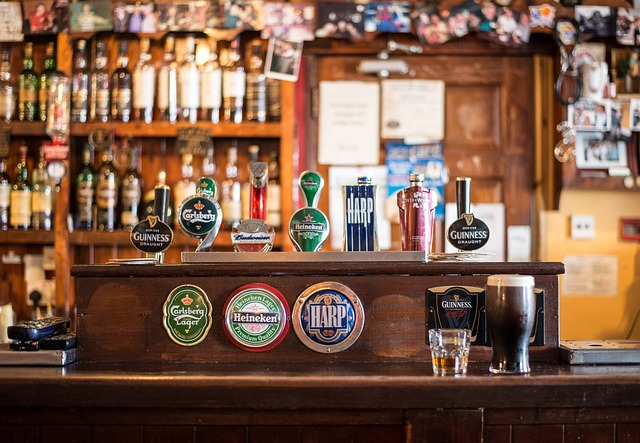
What are the Best Rainy Day Activities for Tourists in Ireland?
The best rainy day activities for tourists in Ireland include visiting museums, galleries, historic castles, sampling Irish cuisine in cozy pubs, and attending traditional music sessions. While rain may alter outdoor plans, it doesn't have to dampen the spirits of tourists exploring Ireland. Fortunately, the country boasts a wealth of indoor attractions and activities to enjoy during rainy days.
From visiting museums and galleries to exploring historic castles and sampling Irish cuisine in cozy pubs, there's no shortage of ways to stay entertained while seeking shelter from the rain. Embracing the Irish tradition of storytelling by attending a traditional music session in a local pub can also be a memorable experience.
Visit Museums and Galleries
Ireland is home to numerous museums and galleries that offer insight into the country's rich history, art, and culture. Explore the National Museum of Ireland in Dublin, delve into Irish literature at the Dublin Writers Museum, or admire contemporary art at the Irish Museum of Modern Art (IMMA). These indoor venues provide an educational and enriching experience, perfect for a rainy day excursion.
Explore Historic Castles
Take shelter from the rain by exploring Ireland's historic castles and fortresses. Wander through the halls of Dublin Castle, marvel at the medieval architecture of Bunratty Castle in County Clare, or explore the imposing ruins of Blarney Castle in County Cork. Many of these castles offer guided tours and interactive exhibits, allowing visitors to immerse themselves in Ireland's fascinating history and heritage.
Sample Irish Cuisine in Cozy Pubs
Seek refuge from the rain in one of Ireland's cozy pubs and indulge in traditional Irish cuisine near the west coast. Savor hearty dishes like Irish stew, fish and chips, or a warming bowl of seafood chowder while enjoying the ambiance of a traditional Irish pub. Pair your meal with a pint of Guinness or a glass of Irish whiskey for an authentic taste of Ireland's culinary delights.
Attend Traditional Music Sessions
Experience the warmth and hospitality of Irish culture by attending a traditional music session in a local pub. Listen to lively reels, jigs, and ballads performed by talented musicians in an intimate setting. Join in the craic (fun) as locals and tourists alike come together to celebrate Ireland's vibrant musical heritage. Whether you're tapping your feet or joining in a sing-along, a traditional music session is sure to lift your spirits on a rainy day.
Participate in Workshops and Classes
Many communities across Ireland offer workshops and classes that provide hands-on experiences in traditional crafts, such as pottery, weaving, or Irish dancing. Take advantage of a rainy day to learn a new skill or craft under the guidance of skilled instructors. These interactive experiences offer a unique opportunity to connect with Irish culture and create lasting memories of your trip to Ireland.
FAQs On How Many Days Does it Rain In Ireland?
Q1. Does it rain every day in Ireland?
While it may seem like it, it doesn't rain every day in Ireland. However, rain showers are frequent, particularly during the autumn and winter months.
Q2. Are there any parts of Ireland that receive little rain?
Yes, some parts of east coast and southeastern Ireland tend to receive less rainfall compared to the western regions or southeast coast, but rain is still a common occurrence throughout the country.
Q3. What is the wettest month in Ireland?
November is often cited as one of the wettest months in a number of days in Ireland, with frequent rain showers and stormy conditions, west generally averages more.
Q4. How should I dress for rainy weather in Ireland?
It's advisable to dress in layers and pack waterproof clothing, including a rain jacket, waterproof boots, and an umbrella or rain poncho.
Q5. Is Ireland always cold and rainy?
While Ireland is known for its frequent rain showers, it experiences a temperate maritime climate with mild temperatures year-round.
